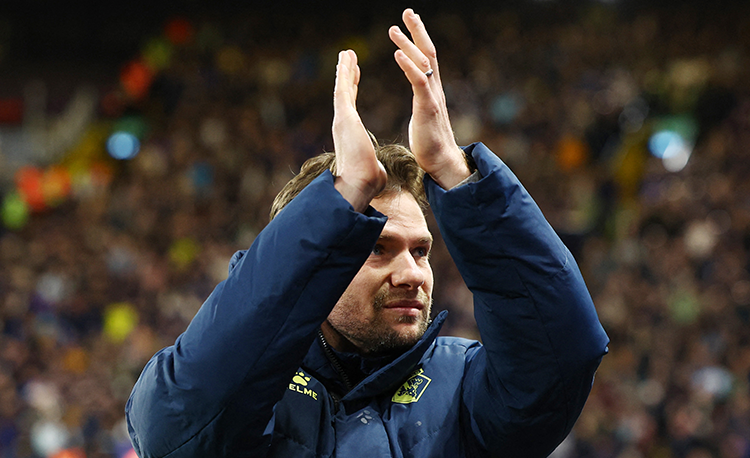Counter-attacking and counter-pressing
The basis of this training session is counter-attacking and counter-pressing. We start with a tactical passing drill and then we go into an attacking and defending exercise, where three forwards attack with tempo in a 3v2.
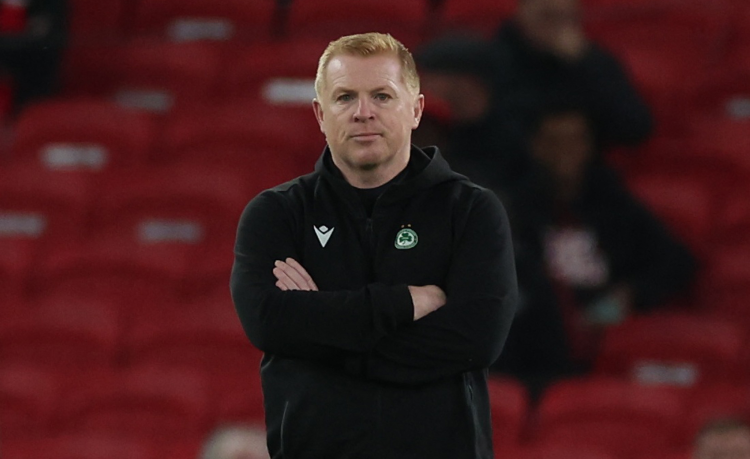
| Area | Up to 55x48 yards |
| Equipment | Ball, bibs, cones, 2 mannequins, 8 mini goals, 2 full-size goals |
| No. of Players | Up to 15 players + 2 goalkeepers |
| Session Time |
Technical practice: 5mins |
The basis of this training session is counter-attacking and counter-pressing. We start with a tactical passing drill and then we go into an attacking and defending exercise, where three forwards attack with tempo in a 3v2.
We follow this with a possession and counter-pressing game, where the possession team has to use good positioning off the ball, utilising space and the support of extra players. The opponents, meanwhile, have to press the ball, win it and quickly counter-attack the small goals. This exercise is intense, very quick and it makes the players think for themselves in tight areas, forcing them to use good decision-making on and off the ball.
We finish with a 7v7 game and obviously we want the players to put into action everything they’ve been working on throughout the session.
The players really enjoy this high tempo session, as there’s not too much standing around and it progresses from one activity to another quite quickly. It’s fast, it’s about concentration and decision making, and it incorporates our styles of attacking play and defensive play in one session. All of those aspects are brought into play in the final game, along with a competitive spirit.
We would run this session on a Match Day -3, because it is an intense 80-minute workout that is also good for conditioning and has cardiovascular benefits.
TECHNICAL PRACTICE
We start with a warm-up [not shown]. We then set up a square playing area of 20x20 yards for a technical passing practice – we could run any passing drill. In the first example we’re using six players set up on cones, as shown [1a].
[1a]

- The session begins with a six-player technical passing practice, with the ball beginning in the top left corner
There is a player on each corner of the square and two players inside the square. The player in the top left corner starts with the ball and plays it inside. The starting player then runs on to receive a return pass before playing it to the player on the bottom right corner, who passes it inside. The two players in the middle combine, then pass it to the player on the bottom right corner. This player passes it inside, then runs on to receive the return ball and plays it to the player on the top right corner. Play then continues following the same pattern.
Simultaneously we run a second technical passing practice, as shown [1b].
[1b]

- A second technical passing practice is run simultaneously with the remaining nine players
- The ball begins in the top left corner
For this we set up a rectangular playing area of 20x40 yards. We’re using nine players, set up on cones. The player on the top left corner of the area starts with the ball, playing it inside and then running on to receive the return ball. Play then follows the pattern as shown.
3v2 ATTACK v DEFENCE
We set up an area of 48x50 yards with a full size goal at one end. Two mannequins are positioned as shown, on either side of a 2x2-yard square marked with cones. We’re using 15 outfield players (nine red attackers and six blue defenders) plus a goalkeeper, although only three attackers and two defenders are in play at any time. The remaining players wait outside the playing area ready to take a turn.
“The three reds must attack with tempo, combining to create a goal scoring opportunity. The two blues try to defend against the attack”
It’s a 3v2 attack in the playing area. One player from the red attacking team starts on each of the mannequins as wingers, while the third red attacker begins in the middle as a striker along with two blue defenders.
The coach starts with the ball, playing it into one of the reds, as shown [2a].
[2a]
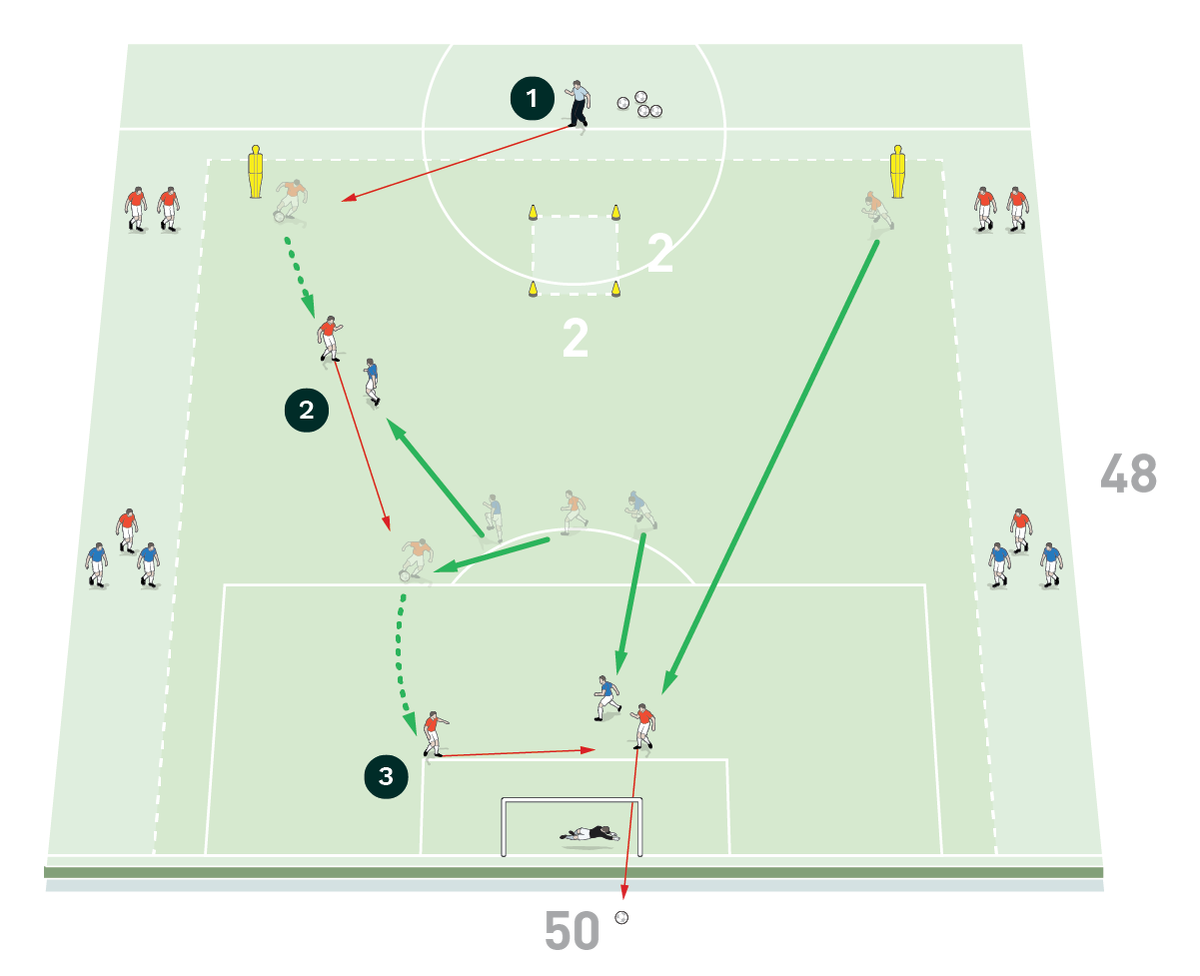
- The coach starts with the ball, playing it into one of the reds. In this case the coach plays it to the red right winger
- The two blues defend against the attack and try to force the play wide
- The three reds must attack with tempo, combining to create a goal scoring opportunity
The three reds must attack with tempo, combining to create a goal scoring opportunity if they can. The two blues try to defend against the attack.
When the attack is dead, the coach plays a second ball to the striker, who must come into the cone square to receive it before launching a fresh attack on goal, as shown [2b].
[2b]
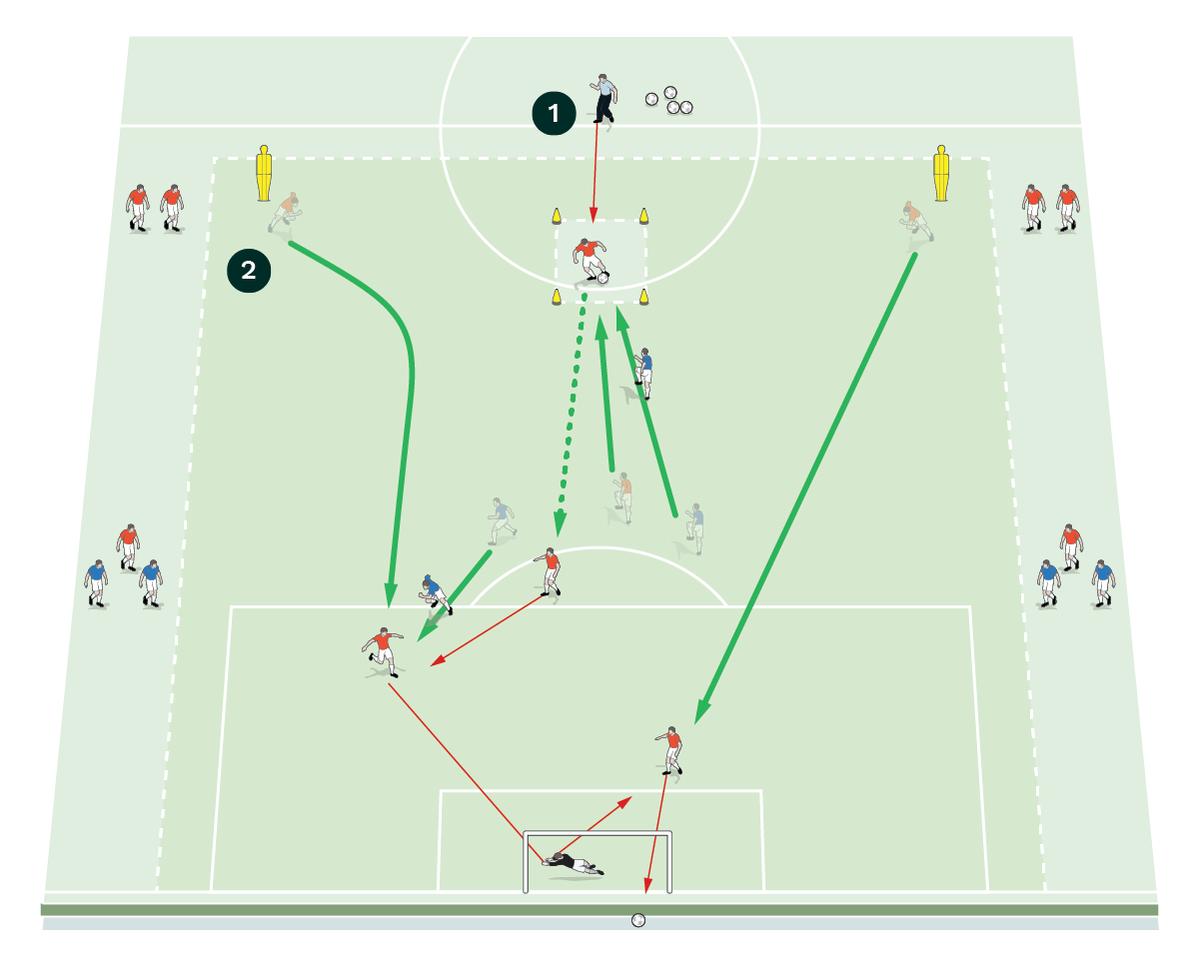
- When the first attack is dead, the coach plays a second ball to the striker, who must come into the cone square to receive it before launching a fresh attack
- The wingers should change their runs rather than attacking in straight lines
“When the first attack is dead, the coach plays a second ball to the striker, who must come into the cone square to receive it”
We want to see fast and incisive attacks with the wingers getting narrower as they approach goal and changing the path of their runs rather than attacking in straight lines. The player in possession should drive centrally when possible to narrow the defenders off.
On the defensive side, the blue defenders have to communicate with each other, showing the attackers one way and obviously taking directions from the goalkeeper. The objective for the defenders is to force the attackers wide to narrow the angles for a shot or to make things more comfortable for the goalkeeper.
The defenders also have to factor in that it’s not really a 3v2, there’s a goalkeeper too so it’s a 3v3 so there’s no need to panic in defensive situations. We would talk to the defenders and tell them to keep calm under the circumstances – even though they feel they’re outnumbered, they actually aren’t as the goalkeeper is in play as well.
We play this for 15 minutes with fresh players rotating in.
POSSESSION AND COUNTER-PRESSING
We set up a playing area of 50x40 yards with the corners cut off and eight mini goals positioned with two on each side of the playing area, as shown. We’re using 15 outfield players split into two teams of six (the reds and the blues) and three yellow neutral players. The yellow neutrals play for the team in possession and they can move anywhere in the area but are restricted to one touch. Goalkeepers are positioned on two opposite sides of the area.
For the first block of four minutes, the red team must maintain possession and are limited to two touches. The reds must position themselves to offer the player on the ball passing options, as shown [3a], and they can use the support of the yellow neutrals and the goalkeepers to give them an overload.
[3a]

- For the first block of four minutes, the red team must maintain possession and are limited to two touches each
- The three yellow neutrals play for the team in possession. They can move anywhere but are restricted to one touch
- The blue team must press and try to win possession
If the blue team wins possession of the ball, they must make four passes before they can try to score in one of the mini goals, as shown [3b].
[3b]
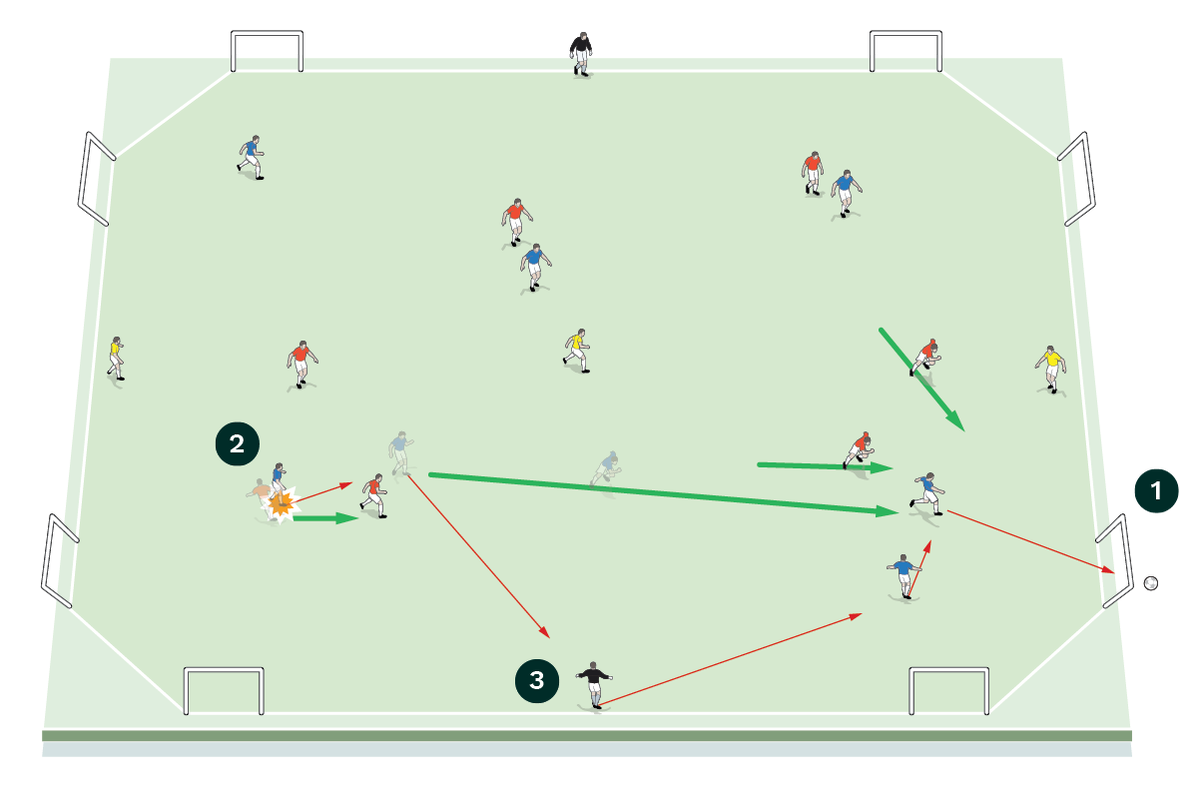
- If the blue team wins possession of the ball, they must make four passes before they can try to score in one of the mini goals. The blues are on two-touch
- The reds look to win the ball back quickly and should counter-press
- Goalkeepers can use their footwork to support the team in possession
The blues are on two-touch when they win the ball while the reds must look to regain possession as quickly as possible and should counter-press.
For the second block of four minutes, the teams swap roles – the blues now start as the possession team and the reds begin as the team looking to counter-attack.
For the third and fourth blocks of four minutes, the possession team must make ten passes before they can try and score in one of the mini goal, as shown [3c].
[3c]
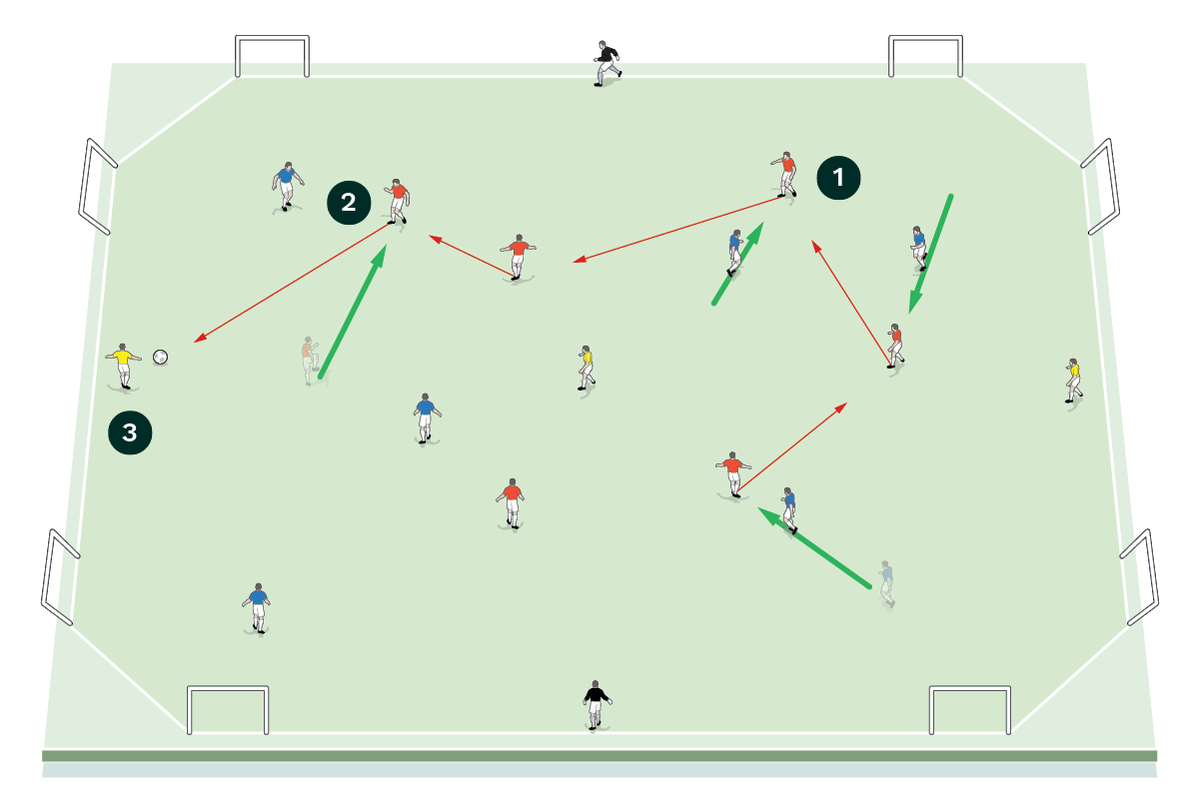
- For the third and fourth blocks of four minutes, the possession team must make ten passes before they can try to score in the mini goals
- The team in possession has to use good positioning off the ball to offer passing options
- The team in possession can still use the support of the yellow floaters and the goalkeepers
7v7 GAME
We set up a playing area of 55x45 yards with a full-size goal and a goalkeeper at each end. We’re using 12 outfield players split into two teams of seven including keepers, as shown [4].
[4]
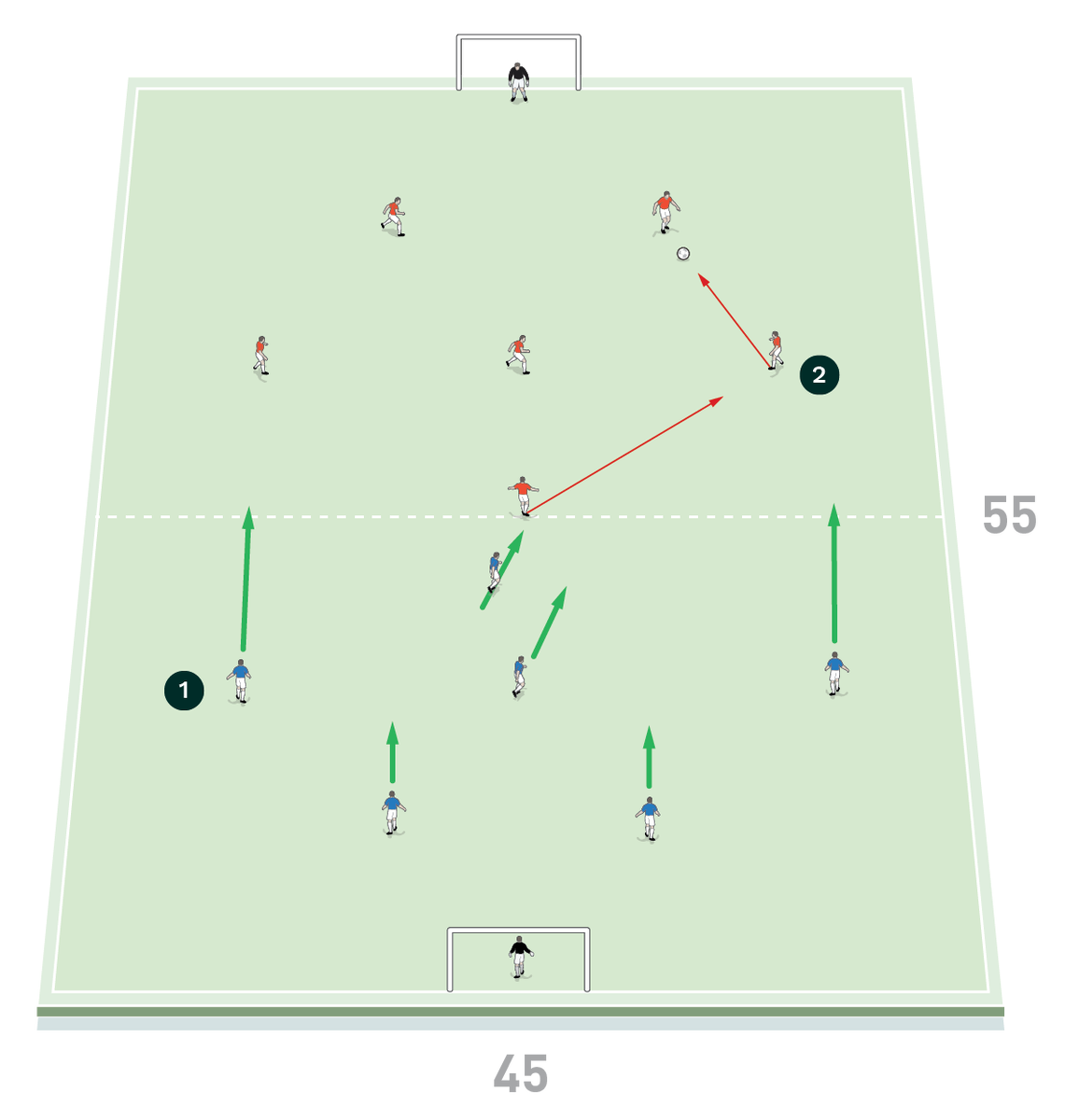
- The two teams play 7v7 for four blocks of five minutes and players should put into action everything they have been working on in the session
- Players are initially on three-touch but as the activity progresses players are all in
Teams play 7v7 for four blocks of five minutes and we want to see players put into action everything they have been working on throughout the session. They should be counter-attacking with speed and counter-pressing aggressively.
In the first two blocks of five minutes, players on both teams are limited to three touches. In the second two blocks, there are no restrictions.
Editor's Picks
Attacking transitions
Deep runs in the final third
Using the goalkeeper in build-up play
Intensive boxes drill with goals
Penetrating the final third
Creating and finishing
My philosophy
Pressing initiation
Compact team movement
Coaches' Testimonials

Alan Pardew

Arsène Wenger

Brendan Rodgers

Carlos Carvalhal

José Mourinho

Jürgen Klopp

Pep Guardiola

Roy Hodgson

Sir Alex Ferguson

Steven Gerrard
Coaches' Testimonials

Gerald Kearney, Downtown Las Vegas Soccer Club

Paul Butler, Florida, USA

Rick Shields, Springboro, USA

Tony Green, Pierrefonds Titans, Quebec, Canada
Join the world's leading coaches and managers and discover for yourself one of the best kept secrets in coaching. No other training tool on the planet is written or read by the calibre of names you’ll find in Elite Soccer.
In a recent survey 92% of subscribers said Elite Soccer makes them more confident, 89% said it makes them a more effective coach and 91% said it makes them more inspired.
Get Monthly Inspiration
All the latest techniques and approaches
Since 2010 Elite Soccer has given subscribers exclusive insight into the training ground practices of the world’s best coaches. Published in partnership with the League Managers Association we have unparalleled access to the leading lights in the English leagues, as well as a host of international managers.
Elite Soccer exclusively features sessions written by the coaches themselves. There are no observed sessions and no sessions “in the style of”, just first-hand advice delivered direct to you from the coach.






